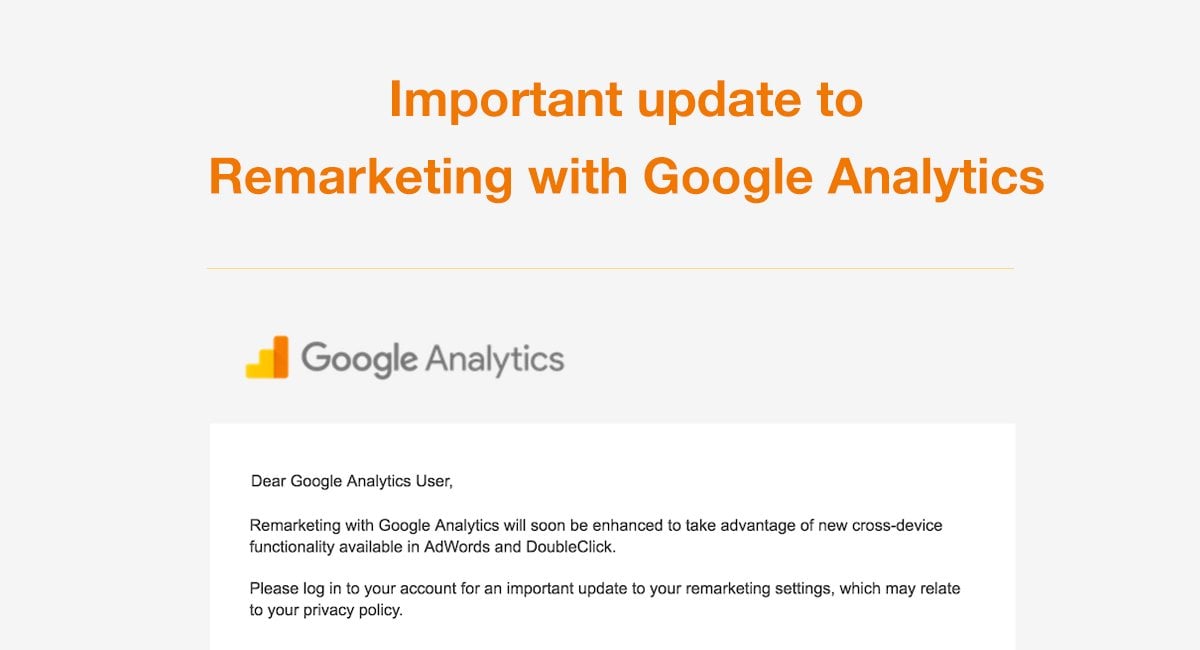Comprehending the Power of Remarketing In Google Analytics
Wiki Article
Optimize Your ROI With Remarketing in Google Analytics
In the world of digital marketing, the utilization of remarketing techniques within Google Analytics has shown to be a potent tool for improving return on financial investment. By taking advantage of the power of user information and tailoring ads to particular target market segments, services can substantially amplify their conversion prices. The real key lies in the art of precision - comprehending individual behavior, crafting compelling advertisements, and continuously refining approaches to drive optimal results. The journey to maximizing ROI via remarketing is a nuanced course paved with understandings and chances that can improve the trajectory of your advertising and marketing endeavors.Understanding Remarketing in Google Analytics
Understanding remarketing in Google Analytics is crucial for maximizing your digital marketing strategy. Remarketing allows you to target customers that have previously visited your site or interacted with your app, offering them with tailored ads as they browse various other websites or utilize various other apps within the Google Present Network. This approach aids keep your brand top of mind and motivates individuals to return to your website, inevitably raising the probability of conversion.By using Google Analytics, you can track the efficiency of your remarketing projects, gaining useful insights right into user behavior, interaction, and conversions. This data allows you to improve your bidding, messaging, and targeting methods to enhance the general efficiency of your campaigns.
Additionally, understanding the different kinds of remarketing lists offered in Google Analytics, such as conventional, dynamic, and similar audiences, enables you to produce tailored and very fractional campaigns customized to particular user sectors. This degree of granularity can substantially improve the significance and influence of your remarketing initiatives, inevitably optimizing your return on financial investment.
Establishing Remarketing Lists
To successfully carry out remarketing campaigns in Google Analytics, the first step entails producing and setting up remarketing listings targeting details individual segments based on their interactions with your website or app. By establishing remarketing lists, you can tailor your advertising initiatives to reach individuals who have actually currently shown interest in your solutions or items.To start, navigate to the Admin section of your Google Analytics account and pick the Building where you desire to develop the remarketing listing. Under the Property column, click on 'Target market Definitions' and choose 'Audiences.' Next off, click the red 'New Target market' switch and choose 'Develop New' to specify the specifications for your remarketing list.

Crafting Reliable Remarketing Advertisements

When crafting your ads, emphasis on producing attention-grabbing headings and compelling visuals that stand apart to potential consumers. Integrate solid calls-to-action that motivate users to review your website and complete a preferred action. Make use of vibrant remarketing to reveal individualized ads featuring product and services that customers have actually formerly viewed on your website.
Additionally, make sure that your advertisements are mobile-friendly considering that a significant section of web web traffic originates from mobile phones. Examination different ad variants to determine which you could try these out messages and designs drive the best results. By constantly refining and maximizing your remarketing ads based upon performance data, you can optimize their performance and boost your roi.
Studying Remarketing Efficiency

Through Google Analytics, marketing professionals can track the performance of their remarketing campaigns in real-time, permitting them to determine patterns, patterns, and areas for enhancement quickly. By assessing the information, marketers can determine which ads are doing well, which target market segments are reacting positively, and which networks are driving the most conversions. This level of granularity allows marketing professionals to make data-driven decisions to enhance their remarketing projects for far better outcomes.
Maximizing ROI With Remarketing
Assessing remarketing information in Google Analytics enables online marketers to identify possibilities for see maximizing return on investment (ROI) via critical adjustments - What Is “Remarketing” In Google Analytics?. To make best use of ROI with remarketing, it is essential to comprehend the actions of your audience. By analyzing user interactions, such as the pages they checked out, the items they checked out, or the activities they tackled your website, you can tailor your remarketing projects betterSegmenting your target market based on their actions allows you to create personalized and targeted advertisements that are more probable to reverberate with them. By revealing pertinent ads to specific sectors of your audience, you can raise the opportunities of conversion and ultimately enhance your ROI.
In addition, evaluating various ad creatives, messaging, and offers can help recognize what resonates finest with your audience. A/B screening permits you to experiment with different aspects of your advertisements to determine what drives the highest possible interaction and conversion rates.
Conclusion
Finally, making the most of ROI with remarketing in Google Analytics needs a critical technique to evaluating user actions, segmenting target markets, developing customized advertisements, and maximizing project efficiency. By leveraging data-driven understandings and checking various methods, companies can improve their remarketing efforts to drive greater involvement and conversion rates. This systematic approach guarantees that resources are effectively allocated in the direction of making the most of rois in remarketing projects.Next off, click on the red 'New Audience' button and pick 'Develop New' to specify the parameters for your remarketing listing.
By constantly refining and enhancing your remarketing advertisements based on efficiency information, you can maximize their effectiveness and improve your return on investment.
By diving right into these understandings, online marketers can acquire an extensive understanding of exactly how their remarketing efforts are resonating with their target audience and driving conversions. To make the most of ROI with remarketing, it is important to comprehend the habits of your target market.In conclusion, taking full advantage of ROI with remarketing in Google Analytics calls for a calculated strategy to assessing individual actions, segmenting audiences, producing customized ads, and enhancing project efficiency.
Report this wiki page